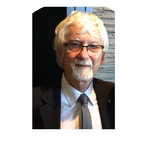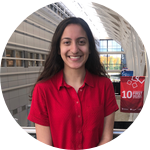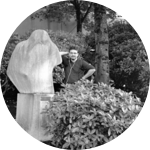About This Project
In October 2020, a pair of previously unseen macroscopic glands (tubarial glands) were visualized in the posterior nasopharynx of 100 patients. These glands were not found until now because the region is highly inaccessible . Our objective is to study the structure and sex-based differences of the tubarial glands. An understanding of all salivary glands is critical for improving the quality of life of patients with head and neck cancer.
Ask the Scientists
Join The DiscussionWhat is the context of this research?
In October 2020, a pair of previously unseen seromucous, macroscopic glands were visualized in the posterior nasopharynx of 100 patients using PSMA PET/CT. Based on the PSMA PET/CT, the TGs have similar uptake of PSMA to other macroscopic salivary glands (SGs). Valstar et al. also stated that the TGs bear similarities to the minor SGs. Valstar et al. hypothesized that the purpose of these glands is to lubricate the nasopharynx and oropharynx. We agree with this hypothesis and therefore aim to study the structure of the TGs further. PSMA PET/CT naturally biases against female study/patient population due to it's usage for prostate imaging, resulting in differences between female and male TGs being unknown.
What is the significance of this project?
This study will address several knowledge gaps in the categorization (major vs. minor) of the TGs and shed more light on the structure of the novel glands. Better understanding of the tissue structure of the TGs in both males and females will expand our current knowledge of physiological processes (i.e., lubrication) in the head and neck region. A clear understanding of all the salivary glands is critical in the improvement of quality of life for patients with head and neck cancer. Head and neck cancer patients undergo radiotherapy to the region where the SGs and TGs are located. Despite protecting the SGs during radiotherapy, some patients still experience dry mouth afterwards. Understanding the TGs could present a possible source of this issue.
What are the goals of the project?
The overarching objective of the proposed study is to conduct a systemic analysis of the histological structure of the TGs in comparison with the major and minor SGs, and to elucidate any sex-based histological or structural differences between male and female TGs. Our first research question is, what are the histological similarities and differences between the TGs and the major and minor SGs? Our second research question is, are there sex-based differences in the TGs between males and females? These questions will be answered by dissecting gland samples from male and female cadavers, processing the samples using immunohistochemistry (IHC) with the PSMA ligands, and hematoxylin and eosin (H&E) staining with PAS mucin stains, and visualizing the samples with ImageJ software.
Budget
These specialized mucin stains will be used when conducting histological analysis of the tubarial glands as well as the major and select minor salivary glands (parotid, submandibular, sublingual, labial, lingual and buccal glands). These stains allow for seromucous tissues to be visualized under a light microscope and allow for the viewer to better analyze their make-up.
All other materials will be funded by the Anatomical Pathology Residency Training Committee, Anatomical Pathology Residency Program, Cumming School of Medicine, University of Calgary.
Endorsed by
 Project Timeline
Project Timeline
We plan to have tubarial gland samples as well as samples from the major salivary glands and select minor salivary glands (parotid, submandibular, sublingual, lingual, labial, and buccal glands) from 28 cadavers by the end of March, 2022. We aim to have all of our samples histologically processed with PAS and H&E stain by the end of April, 2022. By the end of May, 2022 we plan to have images from the histological staining analyzed using ImageJ (find cell size, density etc.)
Dec 16, 2021
Gland samples taken from 8 cadavers
Mar 08, 2022
Project Launched
Mar 31, 2022
Gland samples taken from 28 cadavers
Apr 30, 2022
Histological processing of all gland samples complete with PAS Mucin Stains
May 31, 2022
Microscopy images of tissues after histological staining will be visualized and analyzed with ImageJ
Meet the Team
Team Bio
We are a dynamic and curious team composed of undergraduate and graduate students led by Dr. Lian Willetts, an award-winning researcher and professor of cell biology and anatomy at the University of Calgary. We bring together a wide range of backgrounds including biomedical sciences, pathology, kinesiology, and oncology to form a well-rounded team.
Alisha Ebrahim
Alisha is a Health Sciences student and aspiring physician at the University of Calgary. She is curious about human anatomy and passionate about patient advocacy. She hopes that the results of this study will provide clinicians and researchers with an stronger understanding of the processes in the head and neck region, ultimately improving patient care.
Lian Willetts
Lian completed her Ph.D. in Experimental Medicine under the mentorship of Dr. James Lee (Department of Biochemistry and Molecular Biology, Mayo Clinic Arizona, USA), and Dr. Redwan Moqbel (Faculty of Medicine, University of Alberta, Canada) in 2012. Her research work focused on the generation and application of transgenic mouse-based models to investigate eosinophil degranulation in allergic airway diseases (e.g. asthma). She generated a strain of transgenic mice which lacks the Vesicle Associated Membrane Protein-7 (VAMP-7) only in their eosinophils. Using this model, the role of membrane fusion proteins (e.g. V/R-SNAREs) in eosinophils and their impact on pathophysiological development of asthma can be measured and analyzed.
In 2013, Lian was recruited as a postdoctoral fellow in the Department of Oncology at the University of Alberta and the Alberta Prostate Cancer Research Initiative (APCaRI) supervised by Dr. John Lewis. Her research focused on the mechanism of cancer metastasis and clinical applications in the diagnosis and prognosis of metastasis. Lian and her team combined intravital “live cancer” imaging and model-based research to screen for biomarkers (e.g. microRNAs, proteins, and extracellular vesicles) of cancer metastasis. The project has identified several target-patterns with diagnostic, prognostic, and potential therapeutic value.
Lian has won several prestigious awards for her work, including Postdoctoral Fellowship from the United States Department of Defense Prostate Cancer Program. She was awarded the silver medal at the 2015 International Falling Walls Lab and Conference in Berlin, Germany. Lian is very active in the Falling Walls lab community and was a member of the jury for the Falling Wall Labs 2017.
Lian is a faculty member in the Department of Cell Biology and Anatomy, and teaches clinically-oriented anatomy in Undergraduate Medical Education program, Bachelor of Health Science program and Graduate Science Education.
Kurt Wilde
Kurt is an undergraduate Kinesiology student at the University of Calgary.
caitlan reich
Caitlan is a pathology resident at the University of Calgary
Martin Hyrcza
Dr Hyrcza is a head and neck pathologist as well as scientist at the Arnie Charbonneau Cancer Institute at the University of Calgary.
Additional Information
This study has been approved by the University of Calgary's Conjoint Health Research Ethics Board.
Briefly, IHC will allow for us to visualize the TGs' uptake of PSMA compared to the SGs' uptake. PAS mucin stains allow for salivary glands to be visualized in better detail, and H&E staining allows for differentiation between individual cells and between structures within individual cells.
ImageJ software is a tool that allows images to be visualized and analyzed in detail. Using trainable Weka Segmentation software, we can train ImageJ to distinguish between cell types. Additionally, we can use ImageJ to measure the size, area, and density of different cell types in the glands. This will allows us to quantify the differences between the TGs and the major and minor SGs.
Project Backers
- 5Backers
- 14%Funded
- $285Total Donations
- $57.00Average Donation




